

- Call 908 543 4390
- Email
- Dr.Joni Redlich PT,DPT


 Ready or not, the new school year is here! My two kids have responded very differently: one is super excited and can’t wait to see what 1st grade will bring and my other daughter has been nervous about her new school and thinks everything is “boring.” Each school year brings both excitement and nerves and as parents we can acknowledge their worries and bring calm and focus to the challenges and joys ahead. Here are some tips that can help you get started on the right foot! Whether your child is challenged with their attention, focus, worries or motor skills, I hope you will find a little nugget here to help.
Ready or not, the new school year is here! My two kids have responded very differently: one is super excited and can’t wait to see what 1st grade will bring and my other daughter has been nervous about her new school and thinks everything is “boring.” Each school year brings both excitement and nerves and as parents we can acknowledge their worries and bring calm and focus to the challenges and joys ahead. Here are some tips that can help you get started on the right foot! Whether your child is challenged with their attention, focus, worries or motor skills, I hope you will find a little nugget here to help.

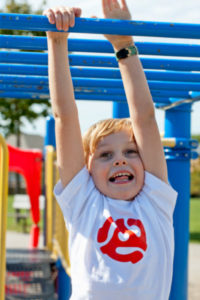
While academics are important, the path to academic success includes a strong foundation, including an active core, good body awareness and well-developed visual skills (not just eyesight!).
Remember that monkey bars can be better for handwriting development than just practicing to write!

Easels, window markers, and wipe off boards on the wall are great tools for children developing their handwriting. Using a vertical surface lines up the eyes, back, shoulder and wrist for writing.
You can even tape a large piece of easel paper to the wall for drawing or painting.

Play math facts with chalk numbers on the driveway, jump to the sight word written on an index card or throw to a letter target on a post-it note. The options are endless!
 4. Morning Exercise
4. Morning ExerciseWe know exercise is good for our bodies, but did you know how good it is for your mind? There has been as ton of research showing exercise helps memory and learning. Can you walk with your child to school in the morning or get up 15 minutes early to have a dance party before the bus comes?
![]()
![]()
Deep pressure or heavy work by pushing or pulling is a great tool for a wiggly body or a nervous child. This type of compression into the joints of the body is grounding and calming. A few easy ways to do this is the push the hands together for a count of 10, sitting in a chair place your hands next to your legs and push down for a count of 10, or do 10 wall push-ups.
For more guidance and individual help, reach out to us any time. You’ll learn more about WHY your child is having difficulty and HOW to help them move forwards to discover success, confidence and independence!
by Wendy Canary, PT
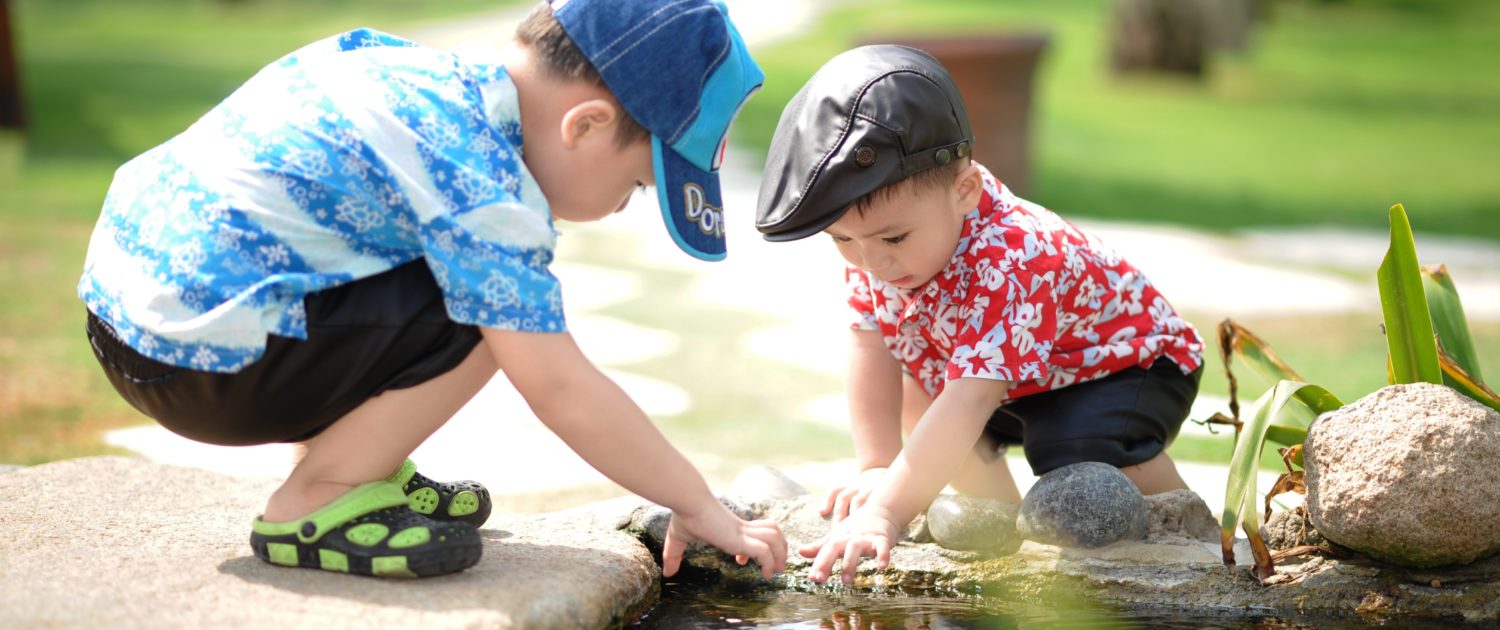
Play! Hearing this word may bring up a million different pictures in your head. Maybe you think of a baseball game or a mound of clumsy puppies rough housing or a baby giggling at a game of peek-a boo. No matter what the age or species, play time is an important piece of development and healthy growth.

In the first year of life, all that a baby does looks like play. Their body proportions, big eyes and sweet smiles add to the image of a playful baby. But those first moments of play represent important work. Babies are exploring their bodies and the world around them and in doing this developing their visual, sensory and motor skills. This exploring can take place while being held, sitting supported or during floor time on their belly and back. Floor time is where they learn to move against gravity, visually focus on objects around them, and problem solve how to explore their environment. As parents we have front row seats to watch for the sweet moments when they first turn their head to your voice, focus their eyes on the toy you are holding, lift their head and chest up off the floor to look around, or master the ability to sit themselves up! These moments happen when they are free to explore the magical world around them that you have created. Cherish these sweet moments of floor time and watch your baby learn and master each skill!

Then it happens, your little one learns to crawl then walk and this is when the game changes! They are able to reach new objects, push toys around, climb onto furniture and get into some mischief. As they move and play their core stability, balance and coordination will increase and the clumsiness of their movements will improve. Toddlers and preschoolers love to play! They will find fun in just about anything and will move from throwing, climbing, running to jumping. They are busy exploring all the ways their bodies can move, imitating all those around them and discovering ways the environment around them can be a jungle gym. This can be an exhausting phase for parents! Take heart in knowing that they are again doing the hard work of growing their motor, visual and sensory skills. However it is okay and important to take breaks in the action and encourage quiet play as well, with building toys, dolls, reading books together, pretend play etc. Take time each day to play on the floor with your child. They will not only be playing but they will be developing their language, social, fine motor and play skills through interacting with you. Chances are you will love this time together and find you stay longer than you expected.
 Once our children enter into the structure of school, the available time for play changes. After school hours quickly fill up with homework, recreational sports, dance, clubs etc. It can be difficult to find time for free play but it continues to be important for the development of a child. Through play at this age, they are not only developing their coordination, strength, and balance but they are developing intellectual, social and communication skills through interactions with their family and peers. In a generation where smart phones are changing how we communicate, there is value in the face to face interactions through a backyard game of tag, or a play date at a park or a game night with the family. Creating the space in their schedule for free time allows the child to rest, decompress and find activities they enjoy!
Once our children enter into the structure of school, the available time for play changes. After school hours quickly fill up with homework, recreational sports, dance, clubs etc. It can be difficult to find time for free play but it continues to be important for the development of a child. Through play at this age, they are not only developing their coordination, strength, and balance but they are developing intellectual, social and communication skills through interactions with their family and peers. In a generation where smart phones are changing how we communicate, there is value in the face to face interactions through a backyard game of tag, or a play date at a park or a game night with the family. Creating the space in their schedule for free time allows the child to rest, decompress and find activities they enjoy!
As a child moves into their teen years, the activities they may choose in their free time will change but the need for  ‘down time’ is equally as important. Being active and engaging in activities that are enjoyable will not only provide the life skills needed for healthy living but also have the added benefit of stress management. Young adults are feeling the pressures of expectations in so many areas of their lives, it is a gift for them to be given the permission to schedule down time without any structure or expectations. For some this may be to play guitar, or take a run, or play a game of basketball with friends or have an impromptu dance party, but whatever their activity of choice is, it will be a time to decompress, recharge and ultimately lead to healthy mental and physical health.
‘down time’ is equally as important. Being active and engaging in activities that are enjoyable will not only provide the life skills needed for healthy living but also have the added benefit of stress management. Young adults are feeling the pressures of expectations in so many areas of their lives, it is a gift for them to be given the permission to schedule down time without any structure or expectations. For some this may be to play guitar, or take a run, or play a game of basketball with friends or have an impromptu dance party, but whatever their activity of choice is, it will be a time to decompress, recharge and ultimately lead to healthy mental and physical health.
No matter what the age, play is a part of life. It is vital to the development of a child and to the health of all ages. As parents we have the job to guide, role model and create the opportunities for exploration through play. Whether you are on the floor with your baby, scheduling a play date at the park with your toddler or taking a hike as a family, you are modeling the importance of play. Play is not wasted time but the building blocks of the skills our children need for their bright futures!
Let’s play!
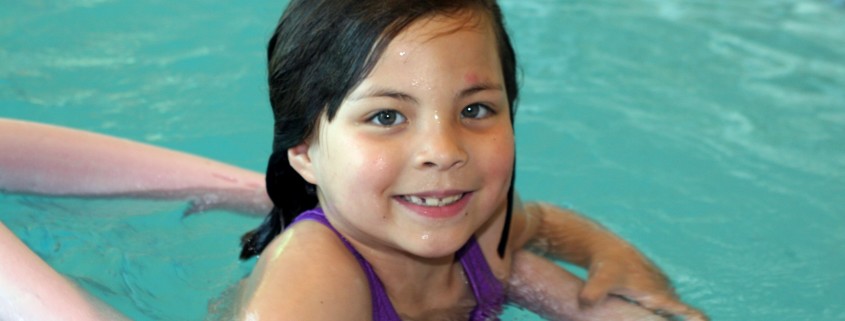
Summer is the time to swim and the therapeutic benefits are endless to playing and moving in the pool. Many children who have difficulty controlling their bodies for sports and gross motor activities will have success moving in the water. Hip hip hooray for creating positive movement experiences to build confidence! But seriously, there is nothing more powerful than a positive experience to build a foundation of possibilities.
Why is it so unique?
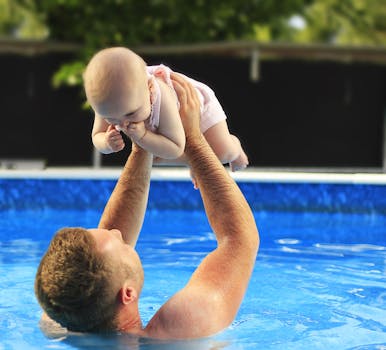
Water provides 30x more deep pressure to the body than air and it is in full contact input to the body. Many children who become adept at swimming underwater will find it a very calming and organizing place to be.
Moving through water creates controlled vestibular stimulation in various planes. All of this enhanced sensory input helps with body awareness development and motor learning.
In addition to swimming, children can walk, somersault, or do angels in the water when supported on their backs.
The water is a natural environment for children to improve their oral-motor skills. Blowing bubbles in the water, blowing through a straw, or blowing ping pong balls across the pool are fun ways to introduce blowing skills.
The intense sensory input in the water will often increase language and lots of singing in the pool will further enhance those opportunities!
Gross Motor Skills
Water can either assist or provide resistance to active movement through all planes of motion, facilitating gains in strength for all major muscle groups. The gravity-lessened environment of wat er can help children explore and practice movements and skills they are not yet able to perform on land. Children with difficulty standing on one leg, jumping, or hopping on land can do so in the water.
er can help children explore and practice movements and skills they are not yet able to perform on land. Children with difficulty standing on one leg, jumping, or hopping on land can do so in the water.
Children who are learning to walk are assisted by the water because it slows down movements and gives the child more time to react.
A fun way to practice these skills is to pretend to be different animals for a length of the pool: jump like a frog, paddle like a seal, float like a fish, gallop like a horse. For children who benefit from visual cues, bring a collection of plastic animals that the child can choose from.
Motor Planning
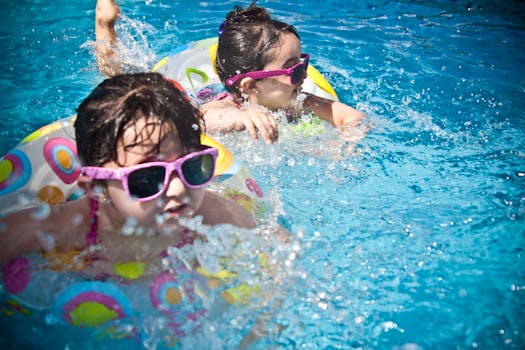
Motor planning skills can be enhanced by experimenting with different ways to use a pool noodle, such as sitting on it like a swing, or a horse, or floating on back with the noodle under knees. Similarly, see how many ways a child can use a kickboard, from sitting to kneeling to standing to holding it and kicking legs.
Have Fun!
Even when looking at swimming and playing in the water as therapeutic, as long as the child is moving in the water, they are getting a benefit. Focus on fun and all of the other benefits will come!
Our guest blogger, Amanda Henderson, is back with some fantastic tips about my favorite thing to do with kids in the summer- SWIM!

Summertime is the prime time for kids to embrace the outdoors with trips to the park, the pool, and other outdoor venues. While this is a time for fun, it is important that parents consider the safety issues related to summer events, especially when it comes to the water. What are some of the best strategies available for keeping your children safe while they embrace the summer season?
Keep close to kids in the water and keep them protected
When it comes to the water, it is critically important that adults never leave young children alone. The Healthy Children site recommends that children under the age of five always be within an arm’s length of an adult, and they suggest that adults learn how to perform CPR. Pools at home should be completely fenced in, with a gate that kids cannot open themselves, and adults may want to consider getting an alarm for the gate as well. Also, explain and enforce pool safety rules and encourage children to discuss them with you so you know they understand.
Another water-related safety tip notes that adults should ensure that kids are wearing properly-fitting life jackets whenever they are on boats. In addition, parents and guardians should be aware of avoiding shallow water for diving, fast moving water, canals, and spots that have the potential for rip currents. Parents often rely on “floaties” or other inflatable devices to help their children in the water, but these should never be used as a substitute for supervision and all too often they provide a false sense of security.
Swim lessons can be a great way to help a child develop confidence in the water and in many communities, swim lessons are available from organizations such as the YMCA or local fitness clubs. In addition, oftentimes there are local swim clubs that can provide lessons to kids as well. Parents often can choose from group lessons at a local pool, semi-private lessons in small groups, or private lessons where the child works one-on-one with an instructor.
Simple steps can keep children safe from chemicals and exposure while outside or at the pool
Parents may not give a second thought to the chemicals used in pools, but as Fox News details, these pool chemicals cause a significant number of injuries every year. Many of these injuries happen at home pools, particularly when opening containers of chemicals or from entering the water too soon after chemicals been added to the water. Chemical containers should be kept away from children and adults handling them should ensure that they are following product directions and using appropriate safety gear.
Embracing the fun of summer also means sun and heat exposure, and adults have to take care to ensure that their children are protected properly during the sunny days. Sun exposure during one’s childhood can have a significant impact on developing melanoma later in life, and it is important that parents takes steps to protect their kids from sun damage.
Sunscreen and protective clothing are essential for outdoor safety
Tips for sun safety include making sure that children six months and under are kept out of direct sunlight and are dressed protectively to ensure that they are lightly covered up and comfortable. Kids of all ages should be dressed in lightweight protective clothing and hats are a great tool for added shelter from the sun.
Once children are more than six months old, sunscreen with a Sun Protection Factor of at least a rating of 15 is critical to use. Sunscreen should be applied ahead of heading into the sun and reapplied every couple of hours or after being in the water. Experts also recommend avoiding the middle hours of the day when the sun’s ultraviolet rays are the strongest and most harmful.
Playing at the park or heading to the pool can be great fun, but it’s important that steps are taken to ensure that kids remain safe. Adults need to protect children from the sun and stay close by their sides in the water. In addition, swim lessons are typically available in every community and they can be a great way to get kids comfortable in the water. Taking just a few simple steps before heading outdoors can go a long way toward keeping kids safe as they embrace the fun of summertime.
[Image by lecreusois/Pixabay]
Introducing our guest blogger, Amanda Henderson, who shares her expertise on parenting and keeping children safe. Check out her fantastic tips!

Image via Pexels
What you teach your children early on has a major impact on the person they become in the future. If you encourage them, show your support, and make sure they know they are loved, they will grow up to be confident and go after the things they really want in life. However, if you don’t put in the effort, your kids can fall into some pretty unhealthy habits that will sneak up on them later on in life. No parent is perfect — there are always things you won’t think of doing. But the following healthy choices are simple things that all parents can do to contribute to the overall well being of their children.
Modern societies are way more sedentary than we need to be and the proof is written all over the scale. Since the 1980s, obesity rates have doubled among adults and more than tripled among children. In the United States, more than two out of every three adults are considered either overweight or obese and one in six children are considered obese. All that excess weight has serious health implications. Those who are overweight or obese have a higher risk of developing illnesses and issues including:
Being active and exercising regularly can help prevent excessive weight gain and the health problems that accompany it. Fortunately, most kids really love being active. In fact, they can’t get enough of it. It’s only over time with overexposure to television, the Internet, and video games that kids stop going outside to play. Teach your kids to put away the screen and enjoy being active as much as possible. Get them involved in sports or other after school activities that encourage exercise such as dance classes. Go on family walks after dinner to help unwind and promote digestion. These little things can instill a love of exercise in your children that they take with them for years to come.
Children are notoriously picky eaters, but you may be surprised at what you can get your kid to eat if you simple involve him or her in the food preparation process. From buying your groceries to cooking the meals, bring your kids along and talk with them about what you buy and make. Demystifying vegetables and showing them how the sauce is prepared helps relieve their anxieties regarding an unknown food so they are more excited to try it. Eating a well-balanced diet full of variety helps encourage everything from brain development to skin health, so your child will have fewer health problems as they grow.
Another benefit of implementing healthy eating in your household is how budget friendly it can be.
Having a set bedtime as well as a time to wake up helps create routine and structure in your child’s life. Beyond that, your child needs enough sleep for his or her healthy development. One in three people do not get enough sleep as adults. This can lead to poor work or school performance, moodiness, weight gain and a host of other health problems. Teaching your children the importance of rest and keeping a regular sleep schedule early on can help prevent them from becoming that one in three.
Amanda Henderson is a mom to two wonderful, active boys and a preschool teacher. She enjoys writing in her free time, and recently decided to create Safechildren so that she would have a place to share her thoughts and favorite resources on parenting and child safety.
 Scoliosis is a abnormal curve of the spine that can occur for various reasons. In the case of Adolescent Idiopathic Scoliosis, the medical community still doesn’t understand why the spine of a typically developing child changes from growing straight to an “S” curve. The most common initial treatment is “wait and see.” If the curve advances, bracing is often recommended in order to prevent the curves from worsening during growth. Surgery is a last resort option, but is often recommended when curves reach a certain point.
Scoliosis is a abnormal curve of the spine that can occur for various reasons. In the case of Adolescent Idiopathic Scoliosis, the medical community still doesn’t understand why the spine of a typically developing child changes from growing straight to an “S” curve. The most common initial treatment is “wait and see.” If the curve advances, bracing is often recommended in order to prevent the curves from worsening during growth. Surgery is a last resort option, but is often recommended when curves reach a certain point.
In the past, exercise based programs were not effective, but research has emerged that supports exercise based intervention as an option to alter the course of scoliosis.
At Kid PT we prefer to be proactive from than “wait and see.”. If we address the spine’s imbalances before it worsens, we can more easily improve the spine’s alignment.
To learn more, give us a call at 908-543-4390. We are happy to provide a 30 minute discovery session to demonstrate how you can take action and improve scoliosis before it requires bracing or surgery.
Sensory processing, emotional regulation and sensory regulation challenges have become so common. One search on the internet and you’ll get a myriad of ideas to help your child calm with deep pressure or the movement they crave.
Did you know that you can impact a child’s sensory experience by simply changing their posture?
Sometimes small changes can make the largest impact. Especially ones that you can reproduce throughout the day, like during mealtime. Changing a child’s posture can change how they breath. A deeper breath can activate a child’s calming system. Plus, the body loves how it feels and will naturally repeat it over and over.
Many children with these challenges overuse postures that make it difficult to activate their core, coordinate their eyes together and can lead to toe-walking. These children often become stuck in a fight-or-flight pattern. Many will present with primitive reflexes still present because more mature movement patterns haven’t had the opportunity to develop.
Other children with these challenges will overuse other patterns and may be told to “sit up tall” all day. These children often haven’t developed the core control needed to sit up while using their eyes, ears and minds all day long. It can be exhausting for them! These children are often w-sitters as well.
Lastly, some children have a combination of these two common postures. The child will overuse one posture in standing and another posture in sitting, letting gravity win in each position.
By supporting a child in a neutral posture, often with someone as simple as a towel roll or yoga wedge, we can build a child’s basic foundations, from the core out. Combine neutral posture with the breath and later with movement and a child’s sensory processing, emotional regulation and sensory regulation can improve.

September 18-24 is Balance Awareness Week!
Balance is something that most people take for granted. It is our constant companion working in the background as we go through our day. We don’t think about it until something goes wrong!!! Read more
Many parents ask me for suggestions this time of year for gifts that will be fun and also promote a child’s gross motor development and fitness. Here are some great ideas to share with family and friends! Read more
